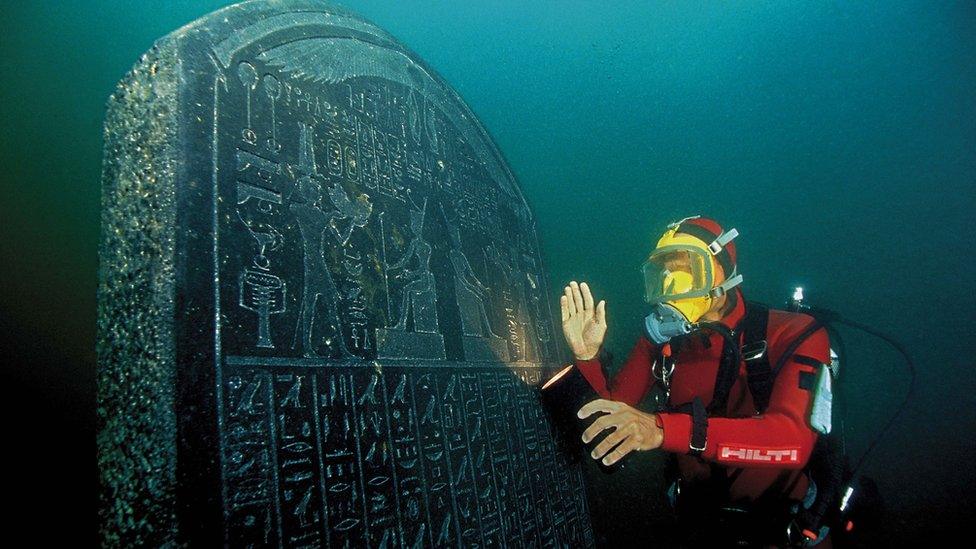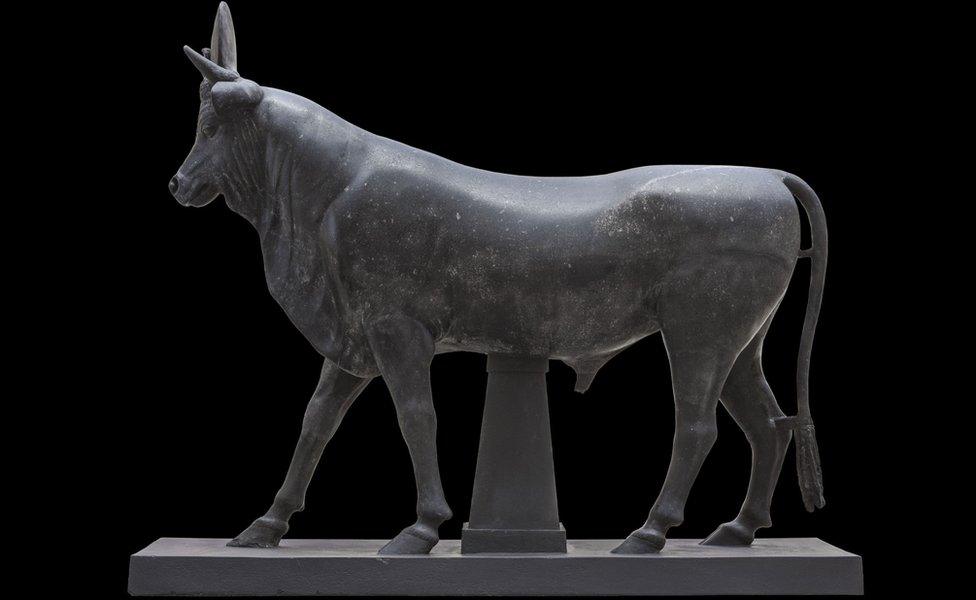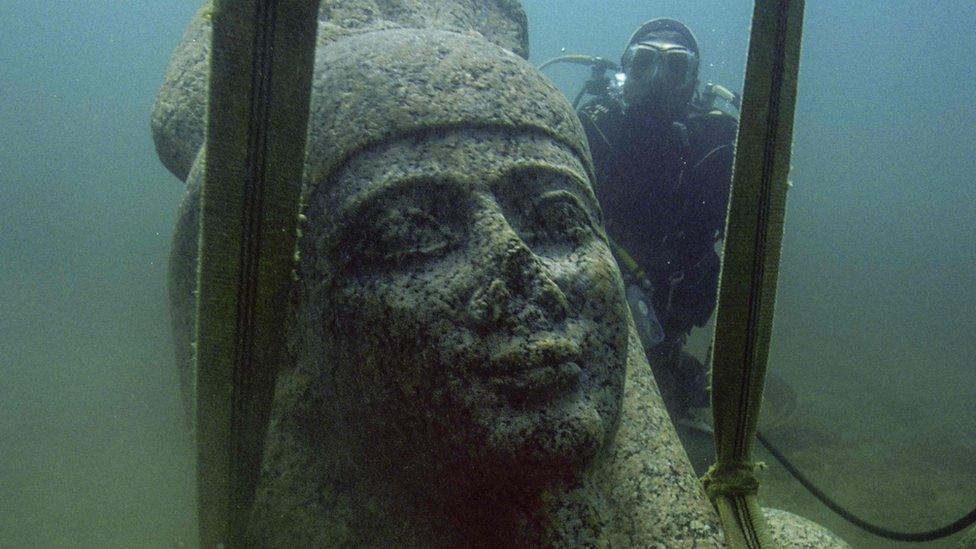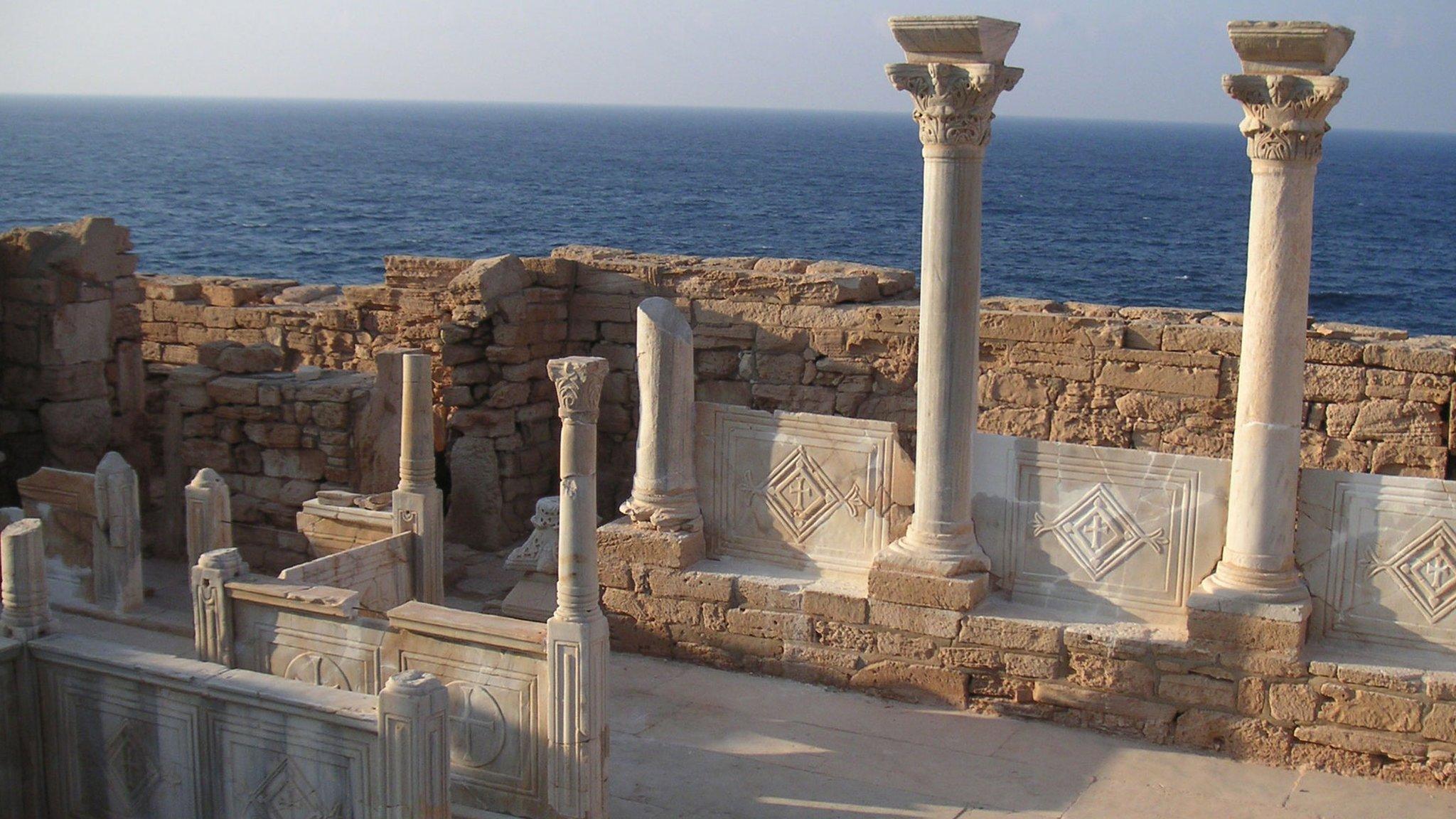Egypt's sunken cities explored at British Museum show
- Published

Colossal statue of god Hapy, Thonis-Heracleion, Aboukir Bay, Egypt
The British Museum is to stage its first major exhibition of ancient objects recovered from the seabed.
Opening in May 2016, Sunken Cities: Egypt's Lost Worlds will feature 200 artefacts found metres deep in clay and silt in the mouth of the river Nile.
Most were excavated from the "lost" submerged cities of Thonis-Heracleion and Canopus between 1996 and 2012.
They include several monumental sculptures that will be brought to the UK for the first time.
'Ground-breaking discoveries'
The loans from Egyptian museums - the first since the Arab Spring revolution - will be supplemented with objects drawn from the British Museum's own collection.
Curator Aurelia Masson-Berghoff said the "ground-breaking discoveries" had "transformed understanding" of the relationship between ancient Egypt and the Greek world.
"People sometimes assume that when two cultures mix, the essence of each is diluted and, as a result, weakened; this exhibition demonstrates the opposite," she said.
She said that a 5.4 metre-tall granite sculpture of the god Hapy - a divine personification of the Nile's flood - would "give a warm, if imposing welcome to our visitors".

This stele, or stone slab, is inscribed with a royal decree from Thonis-Heracleion

This statue of the bull god Apis is from Greco-Roman Museum, Alexandria
Another significant object on show will be a headless sculpture from Canopus representing Arsinoe II - the eldest daughter of Ptolemy I - who was deified after her death to become a Greek and Egyptian goddess.
"She was really famous," said Masson-Berghoff. "Everybody knows Cleopatra but Arsinoe is another mythical queen of the Ptolemaic Dynasty.
"This dignified, striding posture and dark stone are typically Egyptian, but the transparent garment is highly reminiscent of Greek masterpieces - making this statue a perfect combination and Egyptian and Greek style."

The colossal statue of the god Hapy, Thonis-Heracleion is in Aboukir Bay, Egypt
Thonis-Heracleion and Canopus - submerged at the mouth of the River Nile for over a thousand years - were once were cities that once sat on adjacent islands at the edge of the Egyptian Delta.
By the 8th century AD, the sea had reclaimed the cities and they lay hidden several metres beneath the seabed before they were discovered in the 1990s.
Franck Goddio, who led the European team of underwater archaeologists, said that 98% of the site remains unexcavated.
"The policy now is to learn as much as we can by touching as little as we can and leaving it for future technology," he said.
"I have a dream that the visitor will see those artefacts... with the same pleasure that we had when we discovered them in the water."
The BP exhibition Sunken cities: Egypt's lost worlds runs 19 May - 27 November 2016
- Published12 November 2015

- Published24 May 2010